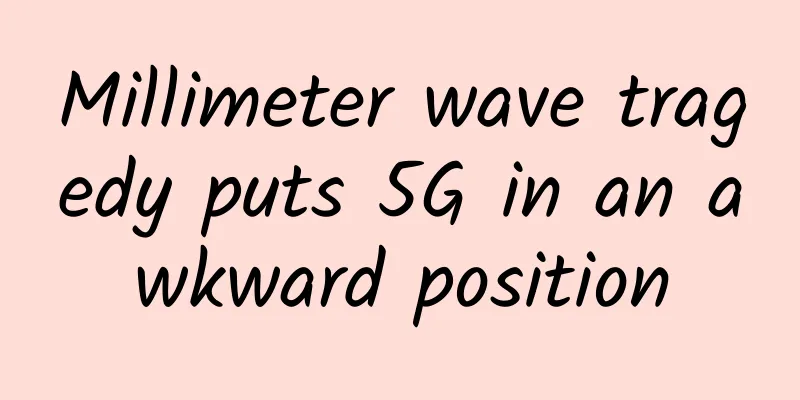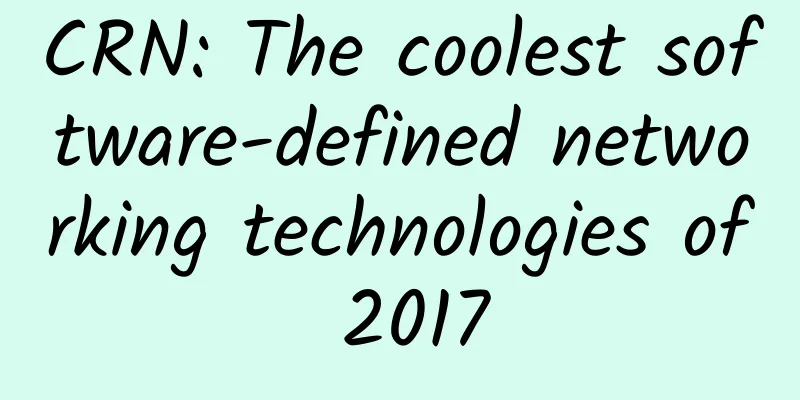Millimeter wave tragedy puts 5G in an awkward position

|
The United States is increasingly anxious and stressed about its leading position in 5G. Why is the United States, which was a leader in the 4G era, so anxious in the 5G era? In fact, it stems from the selection of 5G frequency bands. The United States mainly focuses on the deployment of millimeter waves, but the coverage area of millimeter waves is far less than that of Sub-6. Since the low-frequency bands are firmly in the hands of the military, it involves national security issues, which has put the commercial use of 5G in the United States in an awkward situation.
Millimeter wave tragedy The battle over 5G technology routes is essentially a battle over frequency bands. Currently, two different frequency bands are used to deploy 5G networks around the world. One is the frequency band between 30-300GHz, which is called millimeter wave; the other is concentrated in the 3GHz-4GHz frequency band, which is called Sub-6. US operators are mainly focused on 5G millimeter wave deployment. Why choose to deploy 5G networks in high-frequency bands? Because the US government, especially the military, uses a large number of bands in the 3-4GHz range for military communications and defense communications, making it difficult for operators to auction Sub-6. It is even difficult for operators to share this part of the government's spectrum resources. Completely defeated by Sub-6 frequency band Due to the physical properties of radio waves, the short wavelength and narrow beam characteristics of millimeter waves enhance signal resolution, transmission security and transmission speed, but the transmission distance is greatly reduced. According to Google's 5G coverage test for the same range and the same number of base stations, the 5G network deployed using millimeter waves can cover 11.6% of the population at a rate of 100Mbps, and 3.9% of the population at a rate of 1Gbps; while the 5G network using the Sub-6 frequency band can cover 57.4% of the population at a rate of 100Mbps, and 21.2% of the population at a rate of 1Gbps.
Comparison of Google test results, left for millimeter wave coverage, right for Sub-6 coverage (Image source: Google) It can be seen that the coverage of 5G networks operating under Sub-6 is more than 5 times that of millimeter waves. In addition, the construction of millimeter wave base stations requires the installation of about 13 million poles, which will cost $400 billion to ensure a coverage rate of 72% at a speed of 100 Mbps per second and a coverage rate of about 55% at a speed of 1Gbps per second in the 28GHz frequency band. Sub-6 only needs to install 5G base stations on the original 4G base stations, which greatly saves deployment costs. From coverage to cost, millimeter wave is completely defeated by Sub-6. From 4G Leading to 5G Embarrassment The reason why the United States took the lead in the 4G network era was that it won the 700MHz frequency band in the bidding and was able to deploy LTE networks across the United States. The performance of LTE networks is 10 times that of 3G networks, which has led to the rise of countless Internet companies such as Apple, Google, Facebook, and Amazon, thereby promoting economic development. As LTE networks are deployed around the world, mobile applications are also promoted around the world. It can be said that the success of the spectrum has allowed the United States to dominate the 4G network era. Compared with the United States, the European Union and China are leading the construction of the Sub-6 standard. The three major domestic operators have allocated 200 MHz of mid-band spectrum and are considering reallocating the 500 MHz band. Leaders in the 5G era will earn hundreds of billions of dollars in revenue in the next 10 years and create a wide range of jobs in the field of wireless technology. However, the U.S. millimeter wave is not compatible with 5G networks in other frequency bands around the world, forming a closed-door policy. Conclusion Millimeter wave is in an awkward position compared to Sub-6. However, the US Department of Defense has discovered this problem and is vacating the low and medium frequency bands for 5G networks. However, this process requires high costs and 3-5 years. Only after compatibility with millimeter wave and Sub-6 can the 5G network industry be developed globally. |
<<: How does 5G unlock the development potential of VR?
>>: Security Talk丨How far are we from 5G?
Recommend
6 Examples of How 5G Can Improve IoT Deployments
As digital transformation is in full swing, the n...
HostYun: AMD5950X+M.2 SSD products are launched in Osaka, Japan, with monthly payment starting from 18 yuan
HostYun recently launched the AMD5950X+M.2 SSD pr...
Maker Beijing 2020 Kunpeng Application Innovation Special Competition briefing session to answer questions and enhance contestants' awareness of the competition!
At 2:30 pm on July 28, 2020, the Maker Beijing 20...
Let’s talk about the privacy and security of 5G technology
On March 17, 2022, the European Parliament's ...
Share a few DOS commands that are not outdated. Please save them if you need them.
Although DOS commands are getting further and fur...
AlphaVPS: Bulgaria dedicated servers from €34.99/month, VPS hosting from €15/year
AlphaVPS is a leading IaaS provider in Europe (DA...
SDN Trend Review: 2016 is the First Year of Software-Defined WAN
As 2016 enters its first day, Software Defined Wi...
A simple guide to Wi-Fi, a must-read when buying a router
In this article, we will talk about the wireless ...
Inventory of digital industry keywords in 2017
2017 will soon be a thing of the past, but there ...
ZJI: 55% off on Hong Kong Kwai Wan dedicated servers, E3/E5 servers CN2+BGP lines starting from 550 yuan/month
As autumn is approaching, ZJI has launched a prom...
Gigsgigscloud adds Los Angeles international line 1-10Gbps bandwidth VPS monthly payment starts from $5
Gigsgigscloud recently launched the Los Angeles L...
The report predicts that the global small cell 5G network market will grow at a compound annual growth rate of 31.2% during the forecast period of 2020-2027.
A report released by market research firm Market ...
Sign up for the 2019 Huawei Cloud Kunpeng Developer Competition now. Developers can collect prize money while playing games!
[51CTO.com original article] In the movie "L...
CN2 GIA limited package replenishment for BandwagonHost $46.6/year, optional DC6/DC9/Japan SoftBank, etc.
Bandwagonhost has restocked its limited edition a...









